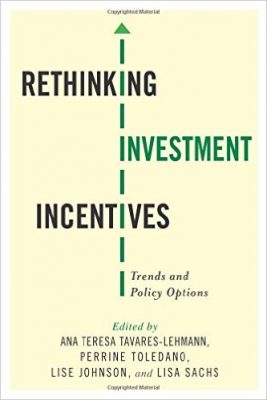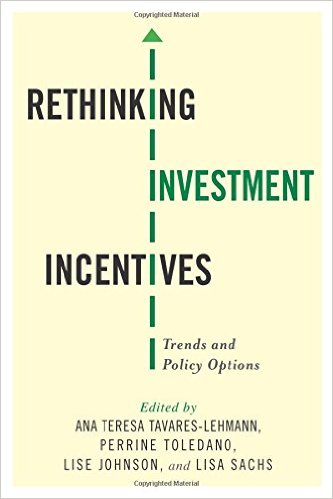 Editors: Ana Teresa Tavares-Lehman, Perrine Toledano, Lise Johnson, and Lisa Sachs
Editors: Ana Teresa Tavares-Lehman, Perrine Toledano, Lise Johnson, and Lisa Sachs
Publisher: Columbia University Press – 358 pages
Book Review by: Sonu Chandiram
Foreign direct investment or FDI is a new means that governments use to attracting capital from other countries. In the globalized world that we live in today, there is intense competition among nations for resources that are crucial to economic development. Why? Because development leads to higher incomes and better standards of living.
These resources are oftentimes found overseas, and today there is increasing mobility of capital, as investors seek the safest places with the highest returns for their money.
What are these resources? One of the most important resources is people, and there are basically two kinds: people with brains and people with brawn. In greater demand are those with brains, including those with knowledge, experience, skills, and proven performance records.
People with brawn are also important because they can provided the labor necessary to get construction and other types of projects done, and often at lower cost than is available domestically. This resource is often classified separately as labor.
A third type of resource is money, usually termed capital. Capital is cash and credit utilized to create value, usually greater value or new value.
This book is about how governments can attract capital from international and domestic sources through incentives. We provide you an overview of what you’ll find in it by listing its contents:
- Introduction
- Part I. Investment Incentives: An Introduction
- Types of Investment Incentives
- Definitions, Motivations, and Locational Determinants
- Part II. A Global Overview of Investment Incentives
- The Use of Investment Incentives
- Incentives ion the European Union
- Incentives in the United States
- Tax Incentives Around the World
- Part III. Designing Incentive Programs to Get Value for Money and Achieve Intended Goals
- A Holistic Approach to Investment
- Investment Incentives for Sustainable Development
- Cost-Benefit Analysis of Investment Incentives
- Part IV. Reducing Incentives Competition: Regulatory Efforts to Limit “Races to the Bottom”
- Regulation of Investment Incentives: National and Subnational to Regulate Competition for Investment Through the Use of Incentives
- Regulation of Investment Incentives: Instruments at an International / Supranational Level
- Conclusions: Outstanding Issues on the Design and Implementation of Incentive Policies
As discussed in this book, some of the incentives that governments provide are direct subsidies and tax credits. There are others but to stick to the focus of this book, its four editors provide essays by 17 authors including themselves, who discuss the who, what, when, where, why and how to maximize the effectiveness of various types of investment incentives.
This is an important, well-organized book that is essential reading for leaders of countries and their decision-making staff, on trade and other related matters, if they are to survive and thrive in our increasingly competitive, globalized world.
Editors:
Ana Teresa Tavares-Lehman is associate professor of economics at the School of Economics at the University of Porto in Porto, Portugal, and head of international business at the University of Porto Business School.
Perrine Toledano is the head of extractive industries at the Columbia Center on Sustainable Investment.
Lise Johnson is the head of investment law and policy at the Columbia Center on Sustainable Investment.
Lisa Sachs is the director of the Columbia Center on Sustainable Investment.






